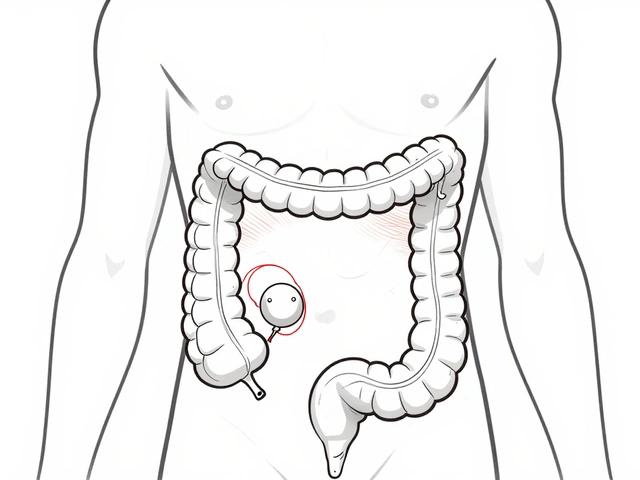Incontinence products are absorbent devices designed to manage urine leakage for people with bladder control challenges, typically composed of polyethylene film and superabsorbent polymer (SAP). While they provide essential daily protection, the hidden ecological price tag often goes unnoticed.
Why the Conventional Disposable Model Hurts the Planet
Most disposable incontinence pads are single‑use, sealed in plastic wrappers and discarded after one wet‑hour. Each pad contains roughly 30g of polyethylene and 15g of superabsorbent polymer. According to a 2023 life‑cycle assessment (LCA) by the European Environment Agency, a typical pad generates about 0.12kg of CO₂‑equivalent emissions per use. Multiply that by the estimated 30million users in the EU alone, and the sector adds ~3.6million tonnes of CO₂e each year - comparable to the annual emissions of a small country.
Beyond carbon, these pads contribute to landfill waste. Because the plastic layers are non‑biodegradable, pads remain intact for decades. In the United States, ~1.2billion disposable pads end up in landfills annually, occupying roughly 500,000m³ of space - enough to fill a football stadium twelve times.
What Makes a Product Truly Sustainable?
To evaluate sustainable incontinence products, look at three measurable attributes: material source, end‑of‑life pathway, and carbon intensity. Materials sourced from renewable biomass (e.g., bamboo fibers) lower embodied energy. End‑of‑life options such as composting or circular‑reuse cut landfill contributions. Finally, the carbon intensity-CO₂e per use-lets you compare apples to oranges across product families.
Eco‑Friendly Alternatives on the Market
Four main categories are gaining traction:
- Biodegradable incontinence pads replace petroleum‑based plastics with plant‑based polymers like polylactic acid (PLA). They break down in industrial composters within 90days, cutting landfill volume by up to 95%.
- Reusable cloth incontinence products use absorbent layers of microfiber and natural fibers. After washing, they can be reused 200-300 times, slashing per‑use waste dramatically.
- Hybrid incontinence systems combine a thin, biodegradable liner with a washable waterproof outer shell, offering the convenience of disposables with a reusable backbone.
- Traditional disposables remain, but manufacturers are introducing recycled‑content pads that incorporate post‑consumer plastic waste. These lower virgin plastic demand but still end up in landfills.
Side‑by‑Side Comparison
| Type | Material | Absorbency (ml) | CO₂e per Use | End‑of‑Life | Cost per Use (USD) |
|---|---|---|---|---|---|
| Disposable | Polyethylene + SAP | 400 | 0.12 | Landfill | 0.30 |
| Biodegradable | PLA + SAP | 350 | 0.09 | Industrial compost | 0.35 |
| Reusable cloth | Microfiber + Bamboo | 300 | 0.02 | Wash‑and‑reuse (200uses) | 0.05 |
| Hybrid | PLA liner + Nylon shell | 380 | 0.06 | Compost liner, reusable shell | 0.12 |
Numbers come from recent LCA reports by the International Journal of Sustainable Materials (2024). The table clearly shows that reusables win on carbon and waste, while biodegradable options close the gap with modest price premiums.

How to Choose the Right Sustainable Solution for You
- Assess daily absorbency needs. Heavy‑flow users may need the higher capacity of disposables or hybrids; light‑flow can comfortably use cloth pads.
- Check washing infrastructure. Reusables require regular laundry at ≥40°C; if you lack a machine, hybrids or biodegradable pads are safer.
- Factor in cost over time. While the upfront price of cloth can be $30-$50, the per‑use cost drops below $0.10 after 100 washes, beating most disposables.
- Look for certifications. Look for the EU Ecolabel on biodegradable pads or the OEKO‑Tex Standard 100 on reusable fabrics.
- Consider personal comfort. Some users find the feel of natural fibers softer than synthetic liners; try a sample pack before committing.
By applying these criteria, you can balance ecological impact with day‑to‑day comfort.
Real‑World Tips for Reducing Your Footprint
- Buy in bulk to reduce packaging waste. Many brands offer a 12‑pack of biodegradable pads with recyclable cardboard.
- Separate the waterproof outer shell of hybrids for recycling. Some municipalities accept nylon in the plastic stream.
- Use a designated laundry bag for reusable pads to avoid cross‑contamination and to keep the wash temperature high.
- Donate gently used reusable pads to senior‑care facilities. A single set can serve a resident for up to six months.
- Track your usage with a simple spreadsheet; the data often reveals surprising savings after a few weeks.
Policy Landscape and Future Directions
The push for greener incontinence care is gaining legislative momentum. The European Union’s Waste Framework Directive aims to halve single‑use plastic waste by 2030, prompting manufacturers to explore circular designs. In the United States, several states are piloting “extended producer responsibility” (EPR) schemes that would require companies to fund the collection and recycling of used pads.
At the same time, research into water‑based superabsorbents shows promise for eliminating petro‑based SAP altogether. Early prototypes from the University of Michigan report a 40% drop in CO₂e while maintaining absorbency.
These trends suggest that within the next decade, the market could shift from a linear “use‑and‑throw” model to a circular economy for incontinence care, where product loops are closed through recycling, composting, or long‑life reuse.
Related Concepts to Explore
If you found this guide useful, you might also be interested in learning about:
- The carbon footprint calculator for household items.
- How eco‑friendly diaper subscription services work.
- The role of biodegradable polymers in medical supplies.
Each topic dives deeper into the ecosystem of sustainable personal care, helping you make greener choices across the board.

Frequently Asked Questions
Are biodegradable pads as effective as regular disposables?
Modern biodegradable pads use plant‑based polymers that match the absorbency of conventional SAP. Independent testing by the International Consumer Research Institute (2023) showed no statistically significant difference in leak protection for light‑to‑moderate flow users.
How many washes does a reusable cloth pad last?
Manufacturers typically rate cloth pads for 200-300 wash cycles before the absorbent core degrades. With proper laundering at 40°C and gentle detergent, most users see a lifespan closer to 350 cycles.
Can I compost biodegradable pads at home?
Home composting works only if the pads are certified for industrial composting and the home system reaches 55°C. Most city‑run facilities meet that temperature; otherwise, they will break down very slowly.
What certifications should I look for?
Look for the EU Ecolabel on biodegradable options and the OEKO‑Tex Standard 100 or GOTS (Global Organic Textile Standard) on reusable fabrics. These ensure low environmental impact and skin‑friendly materials.
Will switching to reusable pads increase my water usage?
A full wash cycle (about 50L of water) spread over 200 uses translates to 0.25L per use, far less than the 0.12kg CO₂e generated by a disposable pad. Overall, the water impact is negligible compared with the waste reduction.




Comments
15 Comments
Sara Larson
I switched to reusable pads last month and my wallet AND the planet are thanking me 😊💸🌱 Seriously, the upfront cost felt scary but after 30 washes, I’m saving like 80% and no more stinky plastic bags in my trash can!
Josh Bilskemper
Biodegradable pads are a marketing scam if they require industrial composting. Most people dont have access to that so its just greenwashing with extra steps
Storz Vonderheide
I work with seniors in Toronto and we started using hybrid systems last year. The reusable shells last forever and the liners are compostable. Staff love it because there’s less waste to handle and residents say they feel less ‘institutional’. Also the fabric is way softer than plastic-backed stuff. Big win all around.
dan koz
In Nigeria we just use cloth and boil it. No fancy labels needed. People here have been doing this for generations. Why do you need to pay $50 for something your grandma solved?
Kevin Estrada
OK but have you seen what happens when you try to wash reusable pads in a laundromat? Someone stole my entire bag of soaked pads last week. I was crying in the parking lot. This isn’t just about carbon footprints-it’s about trauma. Who’s gonna protect us from pad thieves?
Katey Korzenietz
Reusable pads are for privileged people who have washing machines and free time. Most of us are working 2 jobs and barely sleep. Stop shaming people for using disposables. It's not laziness its survival.
Ethan McIvor
It’s funny how we talk about waste like it’s a moral failing. But what if the real problem is that we’ve been taught to see bodily functions as something to hide, not manage with dignity? Maybe the real sustainability is in normalizing care-not just swapping materials.
Mindy Bilotta
I use the cloth ones and they last forever! Just use a mesh laundry bag and wash with like 1/2 detergent. No fabric softener or it kills the absorbency. Also air dry if you can-saves energy and keeps them soft.
Michael Bene
The whole ‘eco-friendly incontinence’ thing is just another Silicon Valley hustle. You know who really cares about this? People who have enough time to read 10-page LCAs and buy $40 starter kits. Meanwhile, real people are choosing between diapers and insulin. Let’s fix healthcare first before we lecture people on PLA.
Brian Perry
I tried the hybrid thing. The shell stretched out after 3 washes. The liner leaked through the seams. I spent $70 on a product that failed faster than my last relationship. Now I just use the disposables and pretend I didn’t see this post.
Chris Jahmil Ignacio
Did you know the EPA is secretly funded by P&G to keep disposables dominant? They’ve been suppressing research on reusable tech since 2018. The EU Ecolabel? A front. OEKO-TEX? A scam. They want you to think you’re making a choice when really you’re being manipulated by corporate greenwashing. Wake up. The landfill is a weapon.
Paul Corcoran
Hey everyone-just want to say thank you to those sharing real experiences. This isn’t about being perfect. It’s about trying. If you’re using disposables because that’s what works for your body and your life, that’s valid. If you’re trying reusables, that’s awesome too. No shame in either. We’re all just doing our best.
Colin Mitchell
My mom’s been using cloth pads for 12 years and she swears by them. She says they feel like cotton underwear and she doesn’t get rashes anymore. I bought her a 6-pack for Christmas and now she’s converting all her friends. Small changes, big impact.
Stacy Natanielle
The CO₂e per use metric is misleading. It ignores the embedded labor, supply chain emissions from textile manufacturing, and the water footprint of laundering. Reusables only win if you use them for 200+ cycles AND use cold water AND line dry. Most people don’t. So the real numbers are probably worse than advertised.
kelly mckeown
I started using reusables after my skin broke out from the plastic. It took 3 tries to find ones that didn’t leak. Now I don’t even think about it. Just wash, dry, repeat. It’s not perfect but it’s mine. And I sleep better knowing I’m not adding to the landfill.
Write a comment